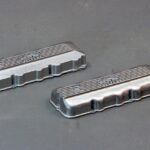For RC car enthusiasts looking to enhance or repair their models, 3D printing offers a fantastic opportunity to create custom parts. However, selecting the right 3D printer and materials is crucial for achieving durable and functional components. This guide explores the best approaches for 3D printing RC car parts, focusing on material choices and essential printing techniques.
Material Selection is Key for RC Car Parts
Choosing the correct material is paramount when 3D printing parts for RC cars. While several options exist, understanding their properties is vital. ABS, often considered initially, presents challenges. Its layer adhesion is not ideal compared to Nylon or PET-G, potentially compromising part strength. While acetone post-processing is suggested to improve layer fusion, its structural benefit is often overstated. Furthermore, ABS is prone to warping and cracking, especially in open-frame printers common in Prusa-style designs.
PET-G emerges as a strong contender, particularly for initial prototypes and less stressed components. It offers a balance of strength and ease of printing, significantly cheaper than Nylon. For parts demanding greater durability, Nylon filaments, such as Taulman 910, are excellent choices. Taulman 910 provides a good surface finish and high strength, albeit with some flexibility compared to stock RC parts. European-made Nylon with glass fibers offers increased stiffness and strong layer adhesion but requires a hardened steel nozzle due to its abrasiveness and can be challenging to print and remove supports.
Optimizing 3D Printing Techniques for Durability
Beyond material selection, printing orientation significantly impacts part strength. For components like suspension arms, vertical printing is recommended. This orientation ensures that bolt holes are within a continuous plastic loop, maximizing strength at critical stress points. Printing arms flat, while simpler, makes them susceptible to breakage at bolt holes due to weaker layer adhesion in those areas, especially during crashes. While vertical printing might increase torsional stress risk along the arm’s length, using materials with good layer adhesion mitigates this concern. In scenarios where failure occurs with vertical printing, the arm might remain partially functional, held by uprights or chassis mounts, allowing completion of a run.
For infill patterns, triangles are a mechanically sound and easily printable option, providing robust internal support. The technique of printing parts at a 45-degree angle to enhance strength in multiple directions is valuable when applicable to the part’s geometry.
Resources and Experimentation
Numerous online platforms offer resources for RC car parts. Thingiverse is a popular repository, while Grabcad provides more professional CAD designs, including well-engineered complete RC car models like a first-generation SC10.
Ultimately, successfully 3D printing RC car parts requires hands-on experience with materials and design considerations. While some parts might prove challenging to print reliably, FDM 3D printers offer a valuable tool for RC car enthusiasts willing to experiment and learn.

